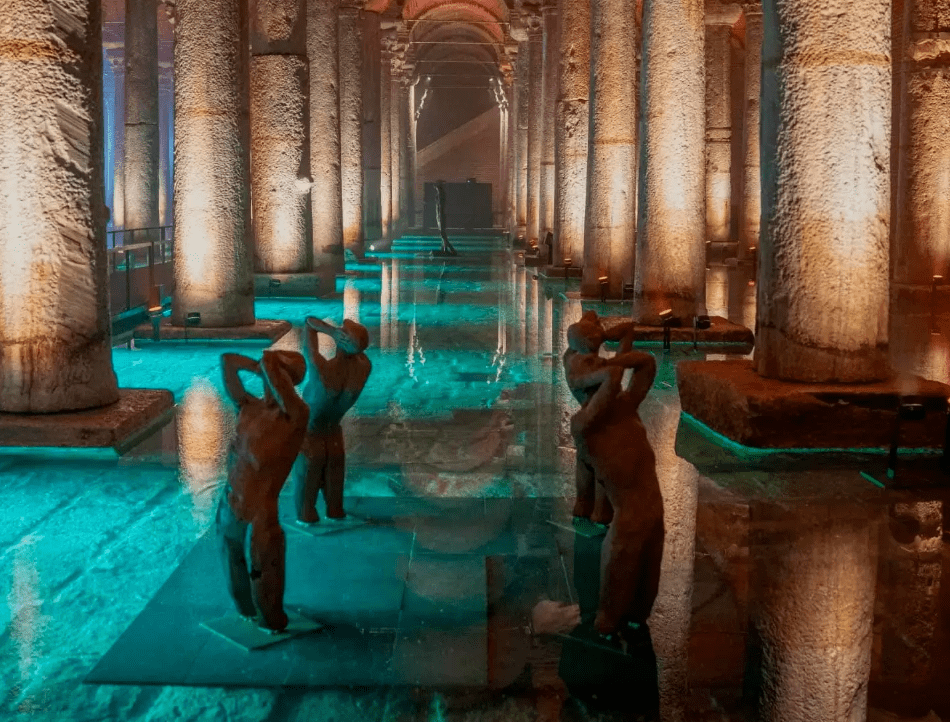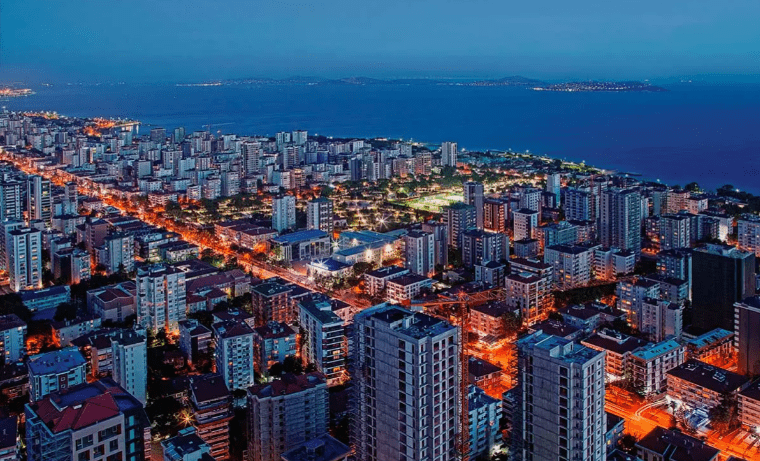Hagia Sophia (Agia Sophia):
Interesting Facts and
Opening Hours
The first place among the most visited places in Istanbul is the Hagia Sophia . It is an important building for two of the world’s major religions. In this article we will give interesting information about Hagia Sophia.
Heey! Booking Now... Pay Later!
Daily City Tours Booking Form
The most important monument in Istanbul that survived the Byzantine period is the Hagia Sophia. Undoubtedly; is the eighth wonder of the world. The most magnificent work of Byzantium. Hagia Sophia is the work of Emperor Justirian; who, together with Constantine, made the most important contribution to Byzantine Istanbul. Due to its size and magnificence, it remained for centuries the most monumental building in the world. He survived many disasters; such as fires and earthquakes in Istanbul and managed to survive until today.
History of Hagia Sophia and Interesting Facts
Hagia Sophia, also known as Hagia Sophia, is one of the most famous architectural and religious monuments in the world. She is located in Istanbul, Türkiye.
Hagia Sophia Brief History
Hagia Sophia is a museum, historical basilica and mosque in Istanbul. It is a basilica planned as a patriarchal cathedral, built by the Byzantine Emperor Justinian I in the old center of Istanbul between 532-537 and converted into a mosque by Fatih Sultan Mehmed after Istanbul was taken by the Ottomans in 1453. It has served as a museum since 1935. The Hagia Sophia is a domed basilica-type building that combines the basilica plan and the central plan in terms of architecture and is considered an important turning point in the history of architecture with its domed aisle and load-bearing structure. features of the system.
With the tolerance of Sultan Mehmet, the mosaics with human figures were not destroyed (those that did not contain were left as is), only the mosaics, covered with thin plaster and plastered for centuries, were thus able to avoid natural and artificial destruction. . While the mosque was turned into a museum, some of the plaster was removed and the mosaics were rediscovered. The Hagia Sophia building that can be seen today is also known as the “Third Hagia Sophia” as it is actually the third church built on the same site. The first two churches were destroyed during the riots. The central dome of Hagia Sophia, which was the widest dome of its period, collapsed many times during the Byzantine period and has never collapsed since Mimar Sinan added retaining walls to the building.
Hagia Sophia Interesting Facts
- The idea of building Hagia Sophia began when Justinian built a large temple and spent all his property for the benefit of religion.
- The construction of Hagia Sophia was initiated by Justinian in January 532. Its architects are Antemios of Thrall (Aydin) and Isidoros of Miletus.

- According to legend, the architect of Hagia Sophia disappeared when it was time to knit the dome; which is the final stage of construction of the Hagia Sophia.
- After this, Konstantin gathered all the architects of the country and asked them to knit the dome. However, no architect would dare to do this. The building remained unfinished for 18 years.
- They bring Konstantin an architect who appeared 18 years later and ask why he ran away. The architect said that he did not escape, but it took so much time for the building to take root, and if the dome is built, the building will be washed out. He then went to build the Hagia Sophia and proved that its size was 4 cubits (approximately 3 meters).
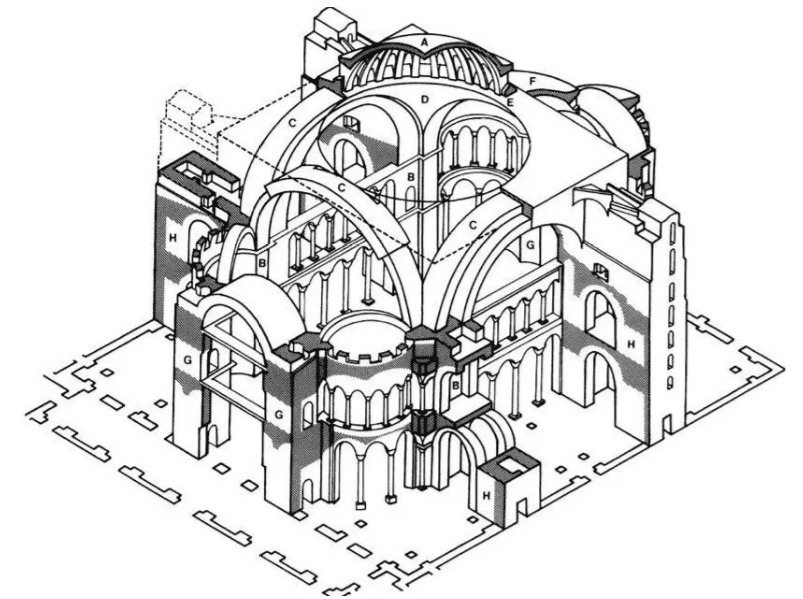
- After earthquakes in 553 and 557, the main dome of Hagia Sophia was damaged. The main dome was destroyed in May 558, 20 years later; how it was opened for service
- In the last century of Byzantium, Hagia Sophia remained abandoned and unrenovated, like the dying city.
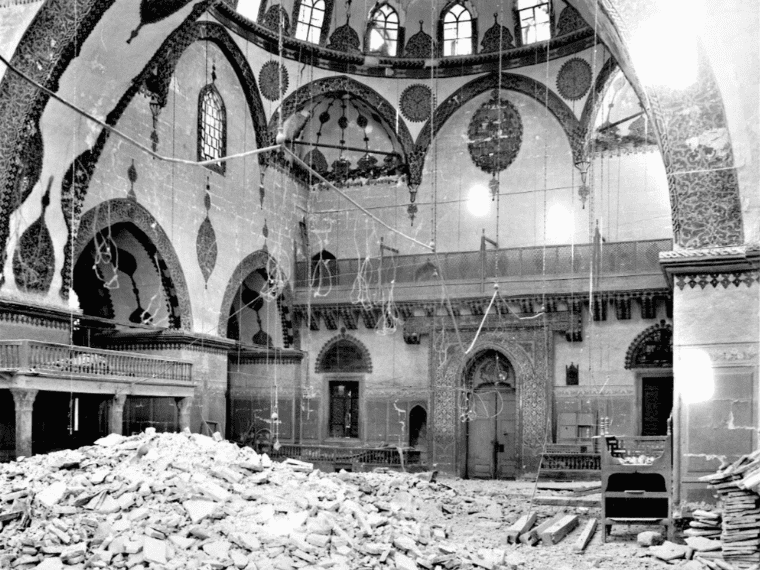
Why was Hagia Sophia turned into a mosque?
Hagia Sophia was used as a church from 537 to 1453, as a mosque from 1453 to 1934, and as a museum from 1934. … After the conquest of Istanbul in 1453, Fatih Sultan Mehmed converted Hagia Sophia from a church into a mosque with the logic of “symbol of conquest” and “right of the sword” and to meet the need for a mosque.
After the conquest of Istanbul by the Ottoman Turks in 1453, Hagia Sophia was immediately converted into a mosque as a symbol of the conquest. At that time, the Hagia Sophia was in a dilapidated state. It is described by Western visitors such as the Cordovan nobleman Pero Tafur and the Florentine Cristoforo Buondelmonti. Fatih Sultan Mehmet, who attached special importance to Hagia Sophia, ordered the church to be immediately cleaned and turned into a mosque, but did not change its name. The first minaret was built during his reign. Although the Ottomans preferred to use stones in such structures, this minaret was made of brick so that the minaret could be built quickly. One of the minarets belongs to Sultan II. Bayezid added. In the 16th century, Suleiman the Magnificent ordered two giant oil lamps to be brought to Hagia Sophia from the church he conquered in Hungary, which today are located on either side of the altar.
What is Hagia Sophia famous for?
This structure, which stood for 15 centuries, is one of the masterpieces of the world history of art and architecture, and with its large dome it has become a symbol of Byzantine architecture. Compared to other cathedrals, Hagia Sophia is distinguished by the following features:
This is the oldest cathedral in the world.
It was the largest cathedral in the world for about a thousand years from the time it was built (until the Seville Cathedral in Spain was completed in 1520). Today it ranks fourth in terms of surface area.
This is the fastest (5 years) built cathedral in the world.
This is one of the longest (15 centuries) religious buildings in the world.
Its dome is considered to be the fourth largest dome in diameter among the domes of the “old cathedral”.
Why is Hagia Sophia important for Christians? Hagia Sophia is the largest church of the Eastern Roman Empire in Istanbul, built three times on the same site. … Throughout the Eastern Roman Empire, Hagia Sophia served as a cathedral, the largest metropolitan church, where monarchs were crowned.
How old is Hagia Sophia?
It was built by the Byzantine Emperor Justinian I between 532-537 in the old center of Istanbul on the historical peninsula as a patriarchal cathedral with a basilica plan.
After the conquest of Istanbul by the Ottomans in 1453, Fatih Sultan Mehmet converted it into a mosque. It served as a museum from 1935 to 2020. In 2020, by presidential decree, it again became a mosque.
Hagia Sophia is 1,485 years old.
What does the name Hagia Sophia mean?
The name “Hagia Sophia” is a combination of two words from different languages and has a special meaning:
Ayia – This word comes from Greek and means “holy” or “sacred.” In the context of Hagia Sophia, it refers to its original status as a Christian cathedral church and a sacred place for Christianity.
Sophia – This word is also from Greek and is translated as “wisdom.” In the context of Hagia Sophia, it refers to the wisdom, knowledge and theological aspects that are associated with this place in the context of the Christian faith.
Thus, the name “Hagia Sophia” can be translated as “Holy Wisdom” or “Sacred Wisdom”. This name reflects the role and significance of Hagia Sophia in Christian history and culture, as well as its importance as a symbol of wisdom and faith.
Who is buried in the Hagia Sophia in Istanbul?
There are no funeral graves in the Hagia Sophia in Istanbul. This architectural structure was originally built as a Christian cathedral by the Byzantine Emperor Justinian I in the 6th century and then converted into a mosque after the capture of Constantinople by the Ottoman Sultan Mehmed II in 1453.
For a long period after it was converted into a mosque, St. Sophia’s Cathedral was used for prayer and religious ceremonies, and no famous figures or rulers were buried inside it. As a mosque, it served as a place for religious services and prayers for Muslim believers.
Later, in 1935, Hagia Sophia was converted into a museum, and it remained a museum until 2020, when a decision was made to return it to the status of a mosque. However, like the mosque and the museum, the St. Sophia Cathedral was not used as a burial site.
Why is it worth visiting Hagia Sophia?
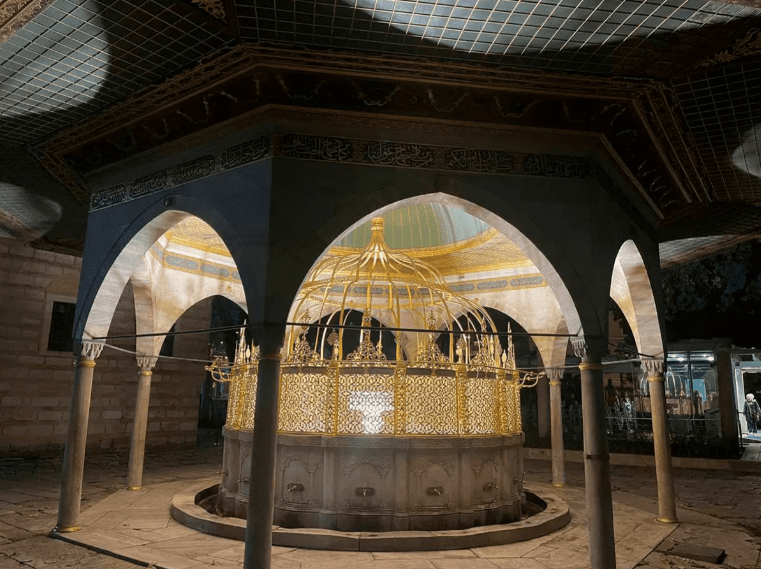
A visit to the Hagia Sophia (Aya Sophia) in Istanbul is a unique and unforgettable experience.
Hagia Sophia has a rich history, dating back to its construction in the 6th century. It served as a Christian cathedral church for the Byzantine Empire and was later converted into a mosque after the Ottomans captured Istanbul. Today it represents a symbol of the historical and cultural layers that have developed over the centuries.
Sofia is an outstanding example of Byzantine architecture. Its grandiose dome and unique cross-domed structure attract attention with their beauty and scale. The interior is decorated with mosaics and frescoes that reflect different periods and styles.
For many centuries, Hagia Sophia served as a church and mosque, and it influenced the development of Christianity and Islam. Its unique status as a site associated with two of the world’s great religions gives it special religious significance.
Hagia Sophia was included in the UNESCO World Heritage List in 1985, which underlines its significance and value for all humanity. It is one of the most significant historical sites in the world.
St. Sophia Cathedral offers beautiful views of Istanbul and its surroundings. Visitors can climb the gallery and admire the majestic panoramic views of the city.
A visit to Hagia Sophia provides an opportunity to immerse yourself in the rich history and culture of the region. It may be of interest to both history and architecture buffs and anyone who seeks to understand world religions and cultures.
Is it possible to pray in Hagia Sophia?
Yes, it was possible to pray in Hagia Sophia at different periods of its history, but the status and use of the place for prayer depended on the religious status of the temple at a given time.
After Sofia was converted into a museum in 1935, prayers and worship inside the building were suspended and it became open to tourists and visitors to enjoy the art, architecture and history of the site.
However, in 2020, Turkish President Recep Tayyip Erdogan signed a decree returning Hagia Sophia to the status of a mosque, and Muslim prayers and services inside the building became possible again.
How to dress in Hagia Sophia?

Since Hagia Sophia is a cultural and historical monument and has special significance for various religions, there are certain rules of dress when visiting this place in order to show respect for its history and religious significance.
Avoid wearing off-the-shoulder clothing. It is recommended to wear shirts, blouses or dresses that cover the shoulders.
Wear skirts or shorts that cover your knees. Very short clothing may not be appropriate when visiting cultural or religious sites.
Avoid wearing exposed trouser belts, especially if they have religious or provocative content.
When visiting a place of religious significance, it is better to choose moderate decorations.
You may have to remove your shoes when entering some parts of Hagia Sophia, as this is a practice in many places of cult significance.
Following these dress codes will help you feel comfortable and respectful of the cultural and religious traditions of Istanbul and the world.
When is the best time to go to Hagia Sophia?
If you want to avoid large crowds of tourists and enjoy the atmosphere of the place in peace and quiet, it is recommended to come to Hagia Sophia early in the morning, when it first opens. There are usually fewer tourists at this time and you can better appreciate its beauty.
Visiting off-peak months, when there are fewer tourists, can save you time in lines and allow you to view the exhibits more calmly.
On some days of the week, tourist spots may be less busy. For example, Mondays and Tuesdays tend to be less popular days for visiting tourist sites.
If you want to visit Hagia Sophia during Muslim prayer times, make sure you do not go during Friday or daily prayer times when the site may be closed to tourists.
Is it possible to take photographs in Hagia Sophia?
The use of flash when taking photographs may be prohibited as it may adversely affect the preservation of artifacts and relics.
If religious ceremonies or prayers are taking place in Hagia Sophia, you should refrain from taking photographs to avoid disturbing the sacred moment.
Some parts of Hagia Sophia may have restrictions on photography to preserve valuable historical man-made items or religious objects.
When visiting cultural and historical sites and shrines, it is always recommended to be respectful of the environment and follow the rules set by the administration of the site in order to preserve its beauty and significance for future generations.
Features of Hagia Sophia
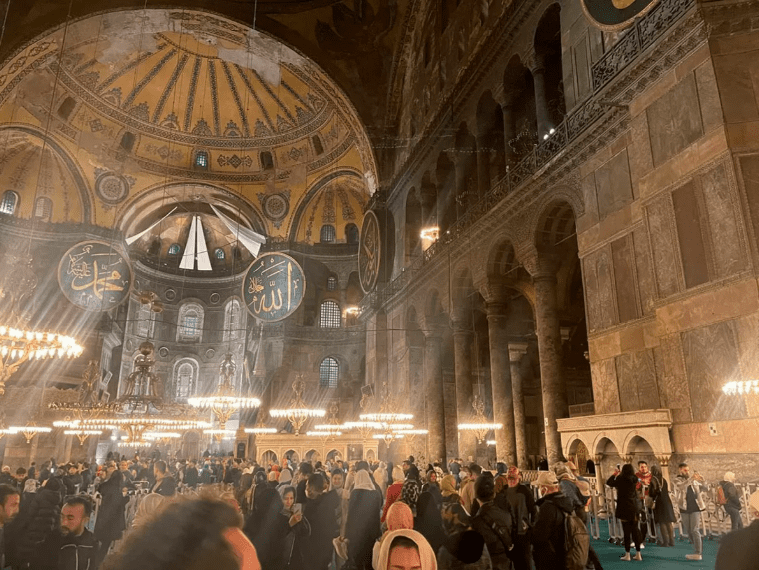
Hagia Sophia is a must-see piece; not only because of its magnificent architecture but also with the best examples of Byzantine mosaic art. Justinian, who reigned during some of the most vibrant periods of the Byzantine Empire; wanted to build a building superior to the legendary Temple of Solomon, which was famous for its gigantic size. Built during a period when Byzantine religious architecture was in search of a plan. The Hagia Sophia is a unique example of Byzantine architecture, not only for its splendor but also for its plan.
Also obvious; that the Hagia Sophia, which indicated attempts to combine the basilic plan used in churches up to that time and the central plan, was nourished by local architectural elements of Anatolia. Most of the columns; The capitals and marble used in its construction are materials collected from ancient buildings in Anatolia. Among the buildings to which the columns belong is the Ephesian Temple of Artemis, one of the Seven Wonders of the World.
In which area of Istanbul is Hagia Sophia located?
Hagia Sophia, located in Sultanahmet Square in Fatih district on the historical peninsula, is the largest Byzantine church built in Istanbul and was built on the same site three times. When it was first built it was called Megale Ekklesia (Great Church), and since the 5th century it has been called Hagia Sophia (Holy Wisdom).
Hagia Sophia opening hours
Hagia Sophia Mosque, weekdays, weekends
Opening and closing:
- Monday 09:00-22:00
- Tuesday 09:00-22:00
- Wednesday 09:00-22:00
- Thursday 09:00-22:00
- Friday 09:00-22:00
- Saturday 09:00-22:00
- Sunday 09:00-22:00
Hagia Sophia, one of the most visited museums, is one of the most outstanding monuments in the world in terms of the history of art and architecture and is considered the eighth wonder of the world.
The opening hours of the Hagia Sophia Museum vary between the summer and winter seasons. On the first day of Ramadan and the Feasts of Sacrifice, the Hagia Sophia Museum is closed to visitors for half a day .
PS Admission is free
Hagia Sophia Mosque How to get there
The most convenient way to get to the Hagia Sophia Mosque is by public transport. You can take the T1 tram line, which stops near the mosque. Disembark at Sultanahmet station and from there the mosque is just a few minutes’ walk away.
Another option is to take a taxi and indicate to the driver that you want to visit the Hagia Sophia Mosque (Aya Sophia). Taxis are usually available in various parts of Istanbul and are a convenient way to reach your destination.
If you are in the historical district of Istanbul known as Sultanahmet , you can walk to the Hagia Sophia Mosque. It is within walking distance of other famous attractions such as the Blue Mosque and Topkapi Palace.
Istanbul Travel Tips

